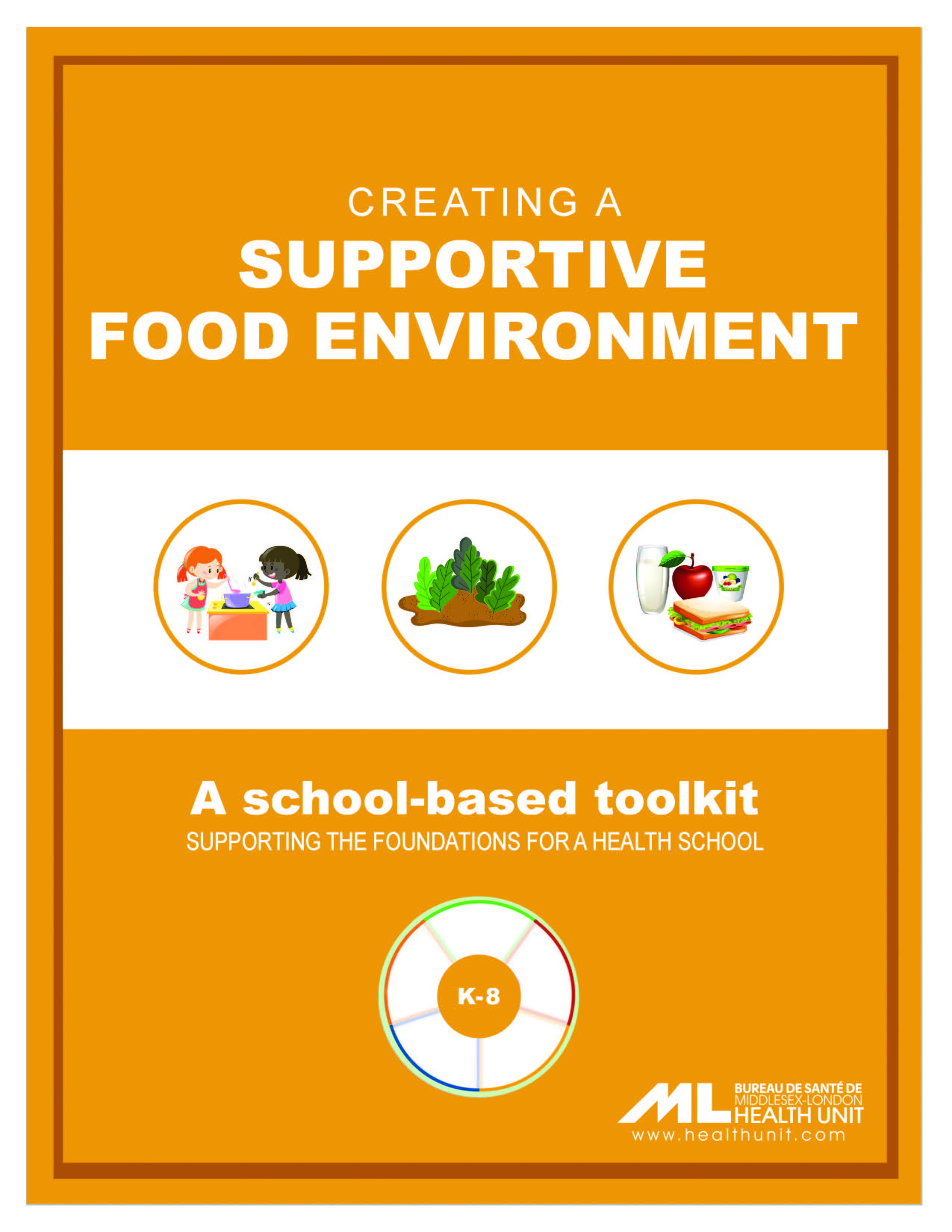School Health - Creating a Supportive Food Environment
A healthy school can help to encourage positive eating habits by providing students with a supportive environment. The most promising food and nutrition programs are comprehensive; they target the attitudes and knowledge of individuals as well creating supportive environments.
Both, a supportive social and physical environment are needed to help promote positive eating habits among students. Providing students with consistent messages is important to help them develop a positive relationship with food. Parents/caregivers and teachers/school staff, as well as students are all responsible for creating a supportive environment. When schools, families, and community groups work together to support learning, children tend to do better in school, stay in school longer, and enjoy school more.1
Students can:
- Participate in school clubs and events related to food and nutrition like Healthy Schools Committees.
- Organize or participate in school-wide awareness events or assemblies related to positive eating habits.
- Participate in food skills programs like Let’s Get Cookin’.

Find strategies to create a supportive food environment at school.
Teachers/school staff can:
Parents can:
- Facilitate Let’s Get Cookin’ food skills program in your child’s school.
- Participate in school activities that help promote positive eating habits.
- Embrace eating together and positive eating habits in the home.
- Use the Lunch Your Kids Will Munch resource when packing school lunches. (français)
- Provide cooking opportunities at home.
Community can:
Policy can:
- Create a positive school nutrition environment.
- Make it easier for students to focus, think and learn if they are well nourished.
- Support staff by providing clear guidelines related to food sold or served.
Food and Nutrition Policy in Your School
Children and teens will eat about one third of their daily food intake at school.2 Students are better able to focus, think and learn if they are well-nourished.2
Ontario School Food and Beverage Policy
The Ministry of Education’s School Food and Beverage Policy (P/PM 150) provides nutrition standards for all food and beverages that are sold in all publicly funded elementary and secondary schools. The policy applies to all food and beverages sold in all elementary and secondary schools.
Other School Nutrition Policies
A comprehensive school nutrition policy can help guide school staff and students in developing a positive relationship with food. Additional school nutrition policies that go beyond the Ontario School Food and Beverage Policy (P/PM 150) can lead to a more comprehensive approach to food and nutrition. For example, a comprehensive school nutrition policy may also include information about fundraising, food served at school meeting and events, classroom celebrations and classroom rewards. A school nutrition policy shows the school’s commitment to the health of its students.
Steps for Creating a Supportive School Food and Nutrition Policy:
- Gain commitment and support from the school community.
- Use Ontario’s School Food and Beverage Policy and ensure that it has been implemented as intended in your school.
- Complete a needs assessment to identify the experiences and needs of students as well as the needs and wants of people in the school community.
- Review comprehensive school nutrition policies created by other school boards as well as ideas outlined in the Creating a Supportive Food Environment toolkit for elementary schools.
- Decide if your school nutrition policy will take a comprehensive approach or if it will deal with one aspect of school nutrition (i.e. classroom celebrations) at a time.
- Join BrightBites for free and get access to a detailed guide for creating a school nutrition policy.
- Write the school policy with input from members of the school community and school board.
- Create a communication plan for the school policy. This helps to ensure that everyone in the school community is aware of what is expected of them and what they can expect from others.
- Evaluate the school policy and ensure it is updated regularly.
Date of creation: January 21, 2013
Last modified on: February 21, 2025
References
2Saskatchewan Ministry of Education (2009).
Nourishing Minds – Towards Comprehensive School Community Health: Nutrition Policy Development in Saskatchewan Schools. Retrieved from Retrieved from
http://www.education.gov.sk.ca/nourishing-minds/
3Bevans, K.B., Sanchez, B., Teneralli, R., Forrest, C.B. (2011). Children’s eating behavior: The importance of nutrition standards for foods in schools. The Journal of School Health, 81(7), 424-429.
